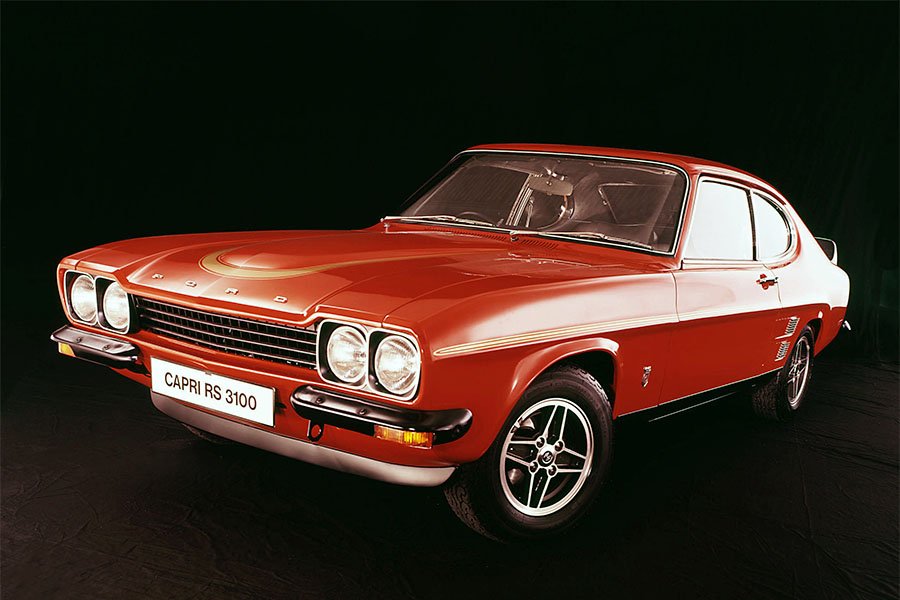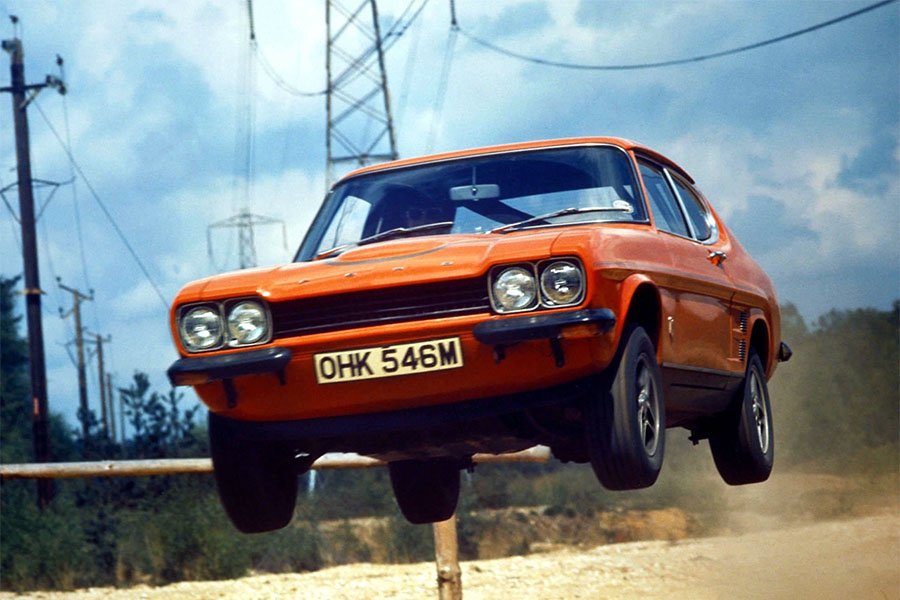Guide: Ford Capri RS3100 - a Historical & Technical Appraisal
/BACKGROUND
The Capri RS2600 had been conceived by Ford Motorsport Germany as a challenger for the European Touring Car Championship (ETCC) which for 1970 returned to a Group 2 format. To qualify required a minimum production run of 1000 cars within a twelve month timeframe.
Developed at Ford Advanced Vehicle Operations in Boreham, England, the RS2600 came with uprated suspension, brakes and wheels, an enlarged Weskale-tuned fuel-injected Cologne V6 and a host of performance-oriented body / interior features.
The RS2600’s debut campaign in 1971 saw it steamroller the opposition in the premier ETCC class where it swept aside the BMW 2800 CS prepared by Alpina and Schnitzer to win six out of eight races. That year, Ford’s Dieter Glemser was crowned Driver’s champion
It was a similar story in 1972, although this time Ford missed out on victory in only one of the nine rounds (their home race at the Nurburgring which fell to the Schnitzer BMW squad). Jochen Mass emerged as the star of the season and won the 1972 Driver’s crown. Ford also yielded first and second in the Touring class at the Le Mans 24 Hours.
1973 marked the arrival of newly formed BMW Motorsport’s E9-based 3.0 CSL which, like the RS2600, was a homologation special created purely to pave the way for the most extreme Group 2 challenger possible.
After a rocky start, the CSL went on to dominate once BMW had homologated a further uprated 3.2-litre version with a wild new ‘Batmobile’ aero kit mid-way through season. From that point, the ageing RS2600 stood little chance against the mighty BMW Motorsport crew which was reliably backed by its Alpina and Schnitzer satellite squads.
Although defeated, Ford was unwilling to give up its crown without a fight and, with this in mind, production of a further uprated Capri RS was given green light on September 25th 1973.
As per the CSL ‘Batmobile’, this latest iteration of the Capri RS would exploit the Group 2 regulations that permitted a tranche of updates to the racing version so long as at least 100 Evolution-type cars that contained said improvements had been produced.
Like its BMW counterpart, the resultant Capri RS3100 ushered in a distinctive spoiler kit and a larger engine that would enable the competition version to run the most powerful engines possible in the over three-litre class. Much of the RS3100’s other equipment was imported from the outgoing RS2600.
Although only 100 examples of the RS3100 were required for homologation, Ford commissioned a batch of 250 cars. Whereas the RS2600 (which was offered exclusively in left-hand drive and built at the Niehl plant in Germany), the RS3100 was constructed at Ford’s Halewood factory with the entire production run completed in right-hand drive. This was done to satisfy the UK market which had never been offered the original Rallye Sport Capri.
Ford expected all 250 cars to be completed between November and December of 1973.
Ford UK announced the RS3100’s availability in early November with a series of publicity photos that starred recently retired three-time F1 World Champion and Ford ambassador, Jackie Stewart. The new model would be sold through the firm’s RS dealerships and was priced at a substantial premium over the otherwise range-topping 3000 GXL.
Group 2 homologation was approved on March 2nd 1974.
ENGINE / TRANSMISSION
Because the Capri RS2600’s Cologne V6 had already been enlarged to its maximum capacity, Ford had commissioned Cosworth Engineering to assess the suitability of their Essex V6 for Group 2 racing back in May 1973.
A few weeks later, Cosworth reported the Essex V6 would serve as a suitable basis for a competition motor and that an output in excess of 400bhp would be achievable in 3.4-litre racing trim.
Like the Cologne motor, the Essex engine was another 60° V6 with iron block, iron siamese-port heads with pushrod overhead valves (two per cylinder) and wet-sump lubrication.
The engine in the RS3100 was derived from the existing three-litre unit found in the Capri 3000 GT which had been available since September 1969.
For this latest application, the cylinder bores were enlarged from 93.6mm to 95.25mm for an overall displacement of 3098cc (up from 2993cc). Stroke was kept at 72.4mm.
Additional Cosworth-derived upgrades applied to the RS3100 motor included hand polished inlet manifolds, cylinder head ports and exhaust ports. Blue cam covers were fitted to differentiate it from lesser variants.
A 9.1:1 compression ratio and twin-choke Weber 38 DGAS carburettor were carried over from the 3000 GT along with an identical exhaust manifold.
Peak output was 148bhp at 5000rpm and 187lb-ft at 3000rpm.
For comparison, the standard 3000 GT produced 138bhp at 5300rpm and 174lb-ft at 3000rpm.
The outgoing Capri RS2600 pumped out 148bhp at 5600rpm and 165lb-ft at 3500rpm.
A small number of RS3100s (to include some of the press cars) were equipped with high lift camshafts and a special free flow exhaust. These cars were said to produce 165bhp.
As per the final iteration of the RS2600 (introduced in October 1971) transmission was through a standard Ford Granada Type E Toploader four-speed gearbox coupled to an Atlas differential with 3.09:1 final drive ratio.
CHASSIS
Each RS3100 started life as a standard steel Capri monocoque with 2560mm wheelbase.
These cars came with a BBECND chassis prefix followed by a unique five digit numbered sequence. Next to the VIN plate was a second body coloured plate with additional information to include the car’s original colour.
Independent front suspension was via MacPherson struts while at the back was a live axle with semi-elliptic leaf springs and radius rods.
Like the RS2600, the RS3100 came with a modified front crossmember that moved the suspension arms outwards in order to provide negative camber.
Similarly, shorter and stiffer heavy duty springs were installed along with gas-filled Bilstein dampers. Special bump rubbers and spacer blocks were fitted at the back. Ride height was around an inch lower than a standard Capri of the time.
The servo-assisted brake system was also carried over with large 248mm ventilated disc brakes imported from the 3-litre Cortina. Front calipers were sourced from the Granada and the beefier wheel hubs were another 3-litre Cortina item.
The 6 x 13-inch Ford RS-branded wheels of the type fitted to the RS2600 since October 1971 were used and normally shod with either Goodyear or Pirelli tyres.
As before, a 58-litre fuel tank from the regular Capri was located in its usual location under the trunk floor.
BODYWORK
Arguably the RS3100’s most distinctive feature was its black rubber Ducktail rear spoiler. Added to provide the racing version with some much-needed high speed stability, it worked in conjunction with the chin spoiler present on the RS2600 since September 1972 to provide the best drag coefficient of any Capri yet.
There was also a new gold decal kit to adorn the power bulge, each flank and the tail fascia.
Unlike the blanked-off configuration of the RS2600, the RS3100 came with GXL-type bright metal dummy grilles ahead of each rear wheel.
Otherwise, the new model was largely identical to the outgoing RS variant.
It featured the same flared front fenders required by the trick front crossmember and that discrete chin spoiler.
Similarly, satin black quarter bumpers were fitted up front with a full width item installed at the back. The front grille and tail fascia were also finished in satin black to give a sporty appearance.
Body panels were fashioned entirely from steel.
INTERIOR
The RS3100’s interior was identical to the 3000 GXL albeit with a special 130mph speedometer.
Some cars also came with a three-spoke RS steering wheel but the majority were equipped with a rather pedestrian two-spoke item.
As per the GXL, reclining seats were installed at the front with bucket seats in the back.
Upholstery was black vinyl.
The black plastic dash featured a wide binnacle that housed most of the switchgear and the controls for the heater / ventilation system. It also contained all six gauges: a large speedometer and rev counter that were flanked to the left by small read outs for water temperature and fuel and to the right by a voltmeter and oil pressure gauge.
OPTIONS
Aside from a limited-slip differential and additional spot lights, no optional extras were available.
Ford offered the RS3100 in a choice of seven exterior colours: Diamond White (60 built), Sebring Red (59 built), Daytona Yellow (49 built), Olympic Blue (27 built), Modena Green (25 built), Stardust Silver (20 built) and Marine Blue (10 built).
WEIGHT / PERFORMANCE
Compared to the final iteration of the RS2600, the RS3100 tipped the scales some 30kg lighter (1050kg as opposed to 1080kg).
The 0-62mph time dropped from 7.5 to 7.3 seconds.
Top speed dropped from 129mph to 125mph as a result of the additional downforce-inducing rear spoiler.
PRODUCTION CHANGES
Pre-production prototypes typically had fixed rear quarter windows and black instead of blue cam covers.
As for the subsequent production version, some RS3100s had red instrument needles while others came with white.
Both leather and plastic gear knobs were variously fitted along with static and inertia-reel seatbelts and two and three-spoke steering wheels.
To comply with local legislation, cars exported to Australia came with exterior mirrors and windscreen wipers with a satin black instead of chrome finish. These examples also came with inertia-reel seatbelts and front seats with headrests. A dealer-fitted option not available in the UK was an RS3100 script added to the rear spoiler.
END OF PRODUCTION
The RS3100 was produced from early November of 1973 until early January of 1974.
Unfortunately, its launch was overshadowed by the impending arrival of the Mk2 Capri and an Oil Crisis that slashed demand for high performance cars practically overnight.
Problems began when Arab OPEC members announced an embargo on oil sales to the USA, UK, Canada, Japan and the Netherlands. The embargo was in response to the USA's support for Israel in the Yom Kippur War where Egypt and Syria, with the support of other Arab nations, had begun a military campaign to regain Arab territories lost during the 1967 Six Day War (when Egypt, Syria and Jordan had been the aggressors).
Oil prices rose exponentially and remained at elevated levels for the next two years.
In an attempt to stimulate interest, 23 examples of the RS3100 were used by Ford’s Area Sales Managers.
With a surplus of stock still hanging around, 50 cars were exported to Australia during the summer of 1974 to which the local distributor carried out the aforementioned upgrades.
In total, 250 examples of the RS3100 were completed in addition to circa half a dozen pre-production prototypes.
COMPETITION HISTORY
As a consequence of the Oil Crisis, both Ford and BMW ran limited works campaigns during the 1974 season.
The newly uprated Capris were fitted with Cosworth’s 3.4-litre GAA motor which produced comfortably in excess of 400bhp.
Ford only contested four of the reduced six race European Touring Car Championship; the Capris were beaten by the rarely seen works BMWs on their debut at the Salzburgring but followed up with a trio of wins in their other three ETCC appearances of 1974 (at the Nurburgring, Zandvoort and Jarama).
However the sheer volume of privateer CSLs meant BMW pipped Ford to Division 2 honours by two points.
Zakspeed Escort RS1600 Division 1 driver Hans Heyer was crowned Driver’s champion.
Heyer’s team-mate, Dieter Glemser, was crowned 1974 DRM champion although Rolf Stommelen and Klaus Ludwig put on strong showings in the Capri RS3100.
With economic conditions having failed to improve by 1975, neither Ford or BMW played any official role in that year’s ETCC or DRM championships.
Text copyright: Supercar Nostalgia
Photo copyright: Ford - https://www.ford.com






































